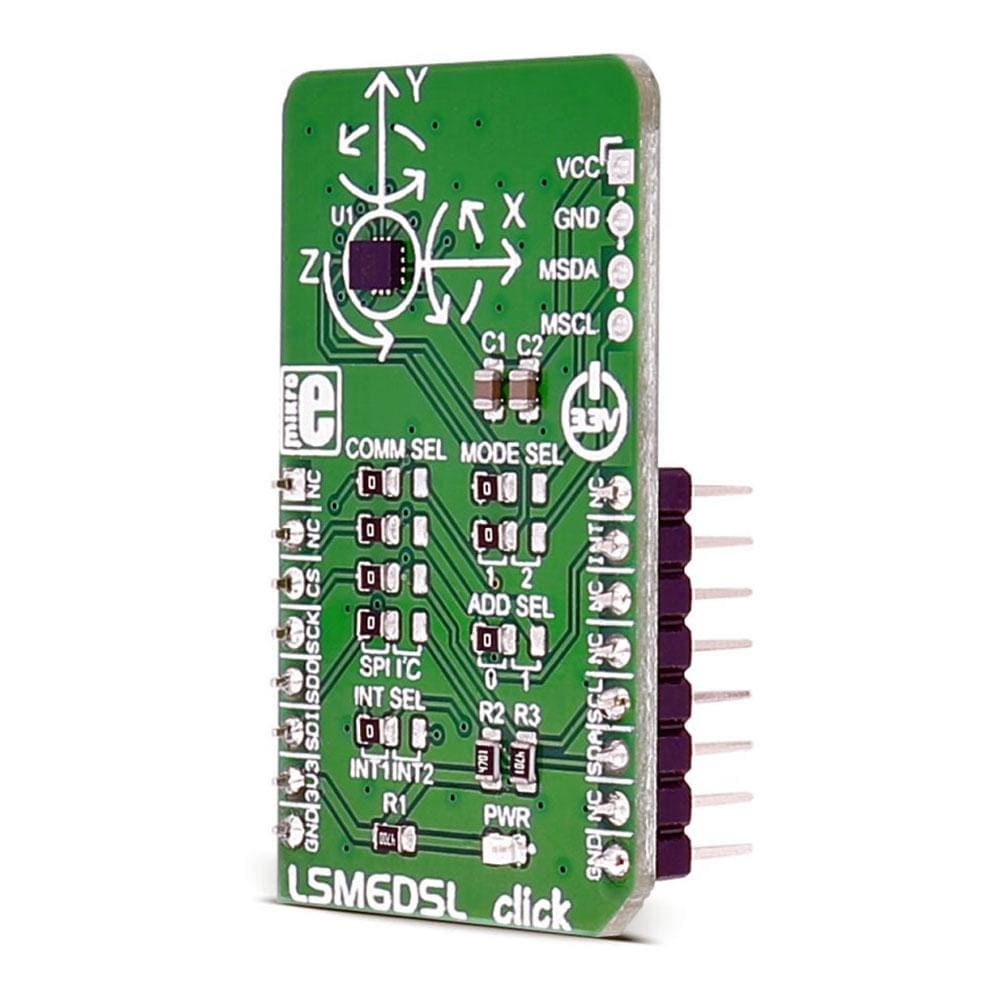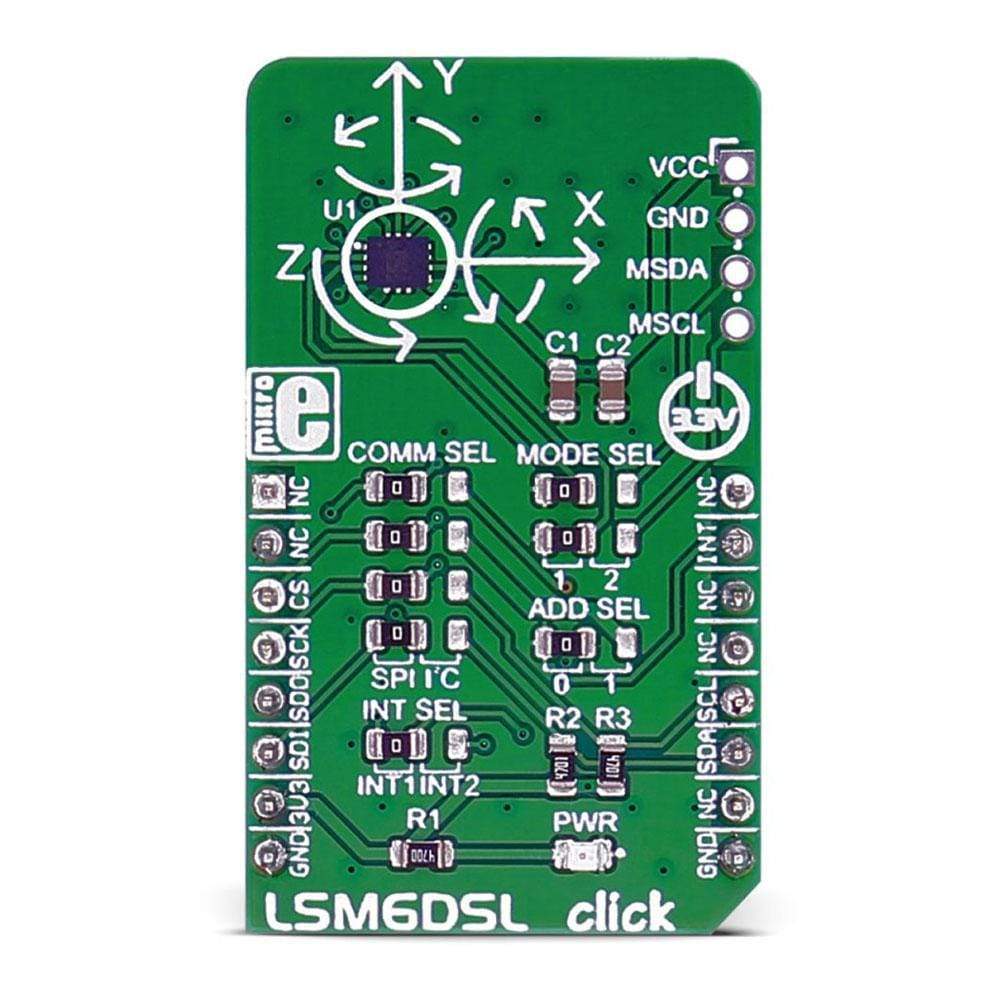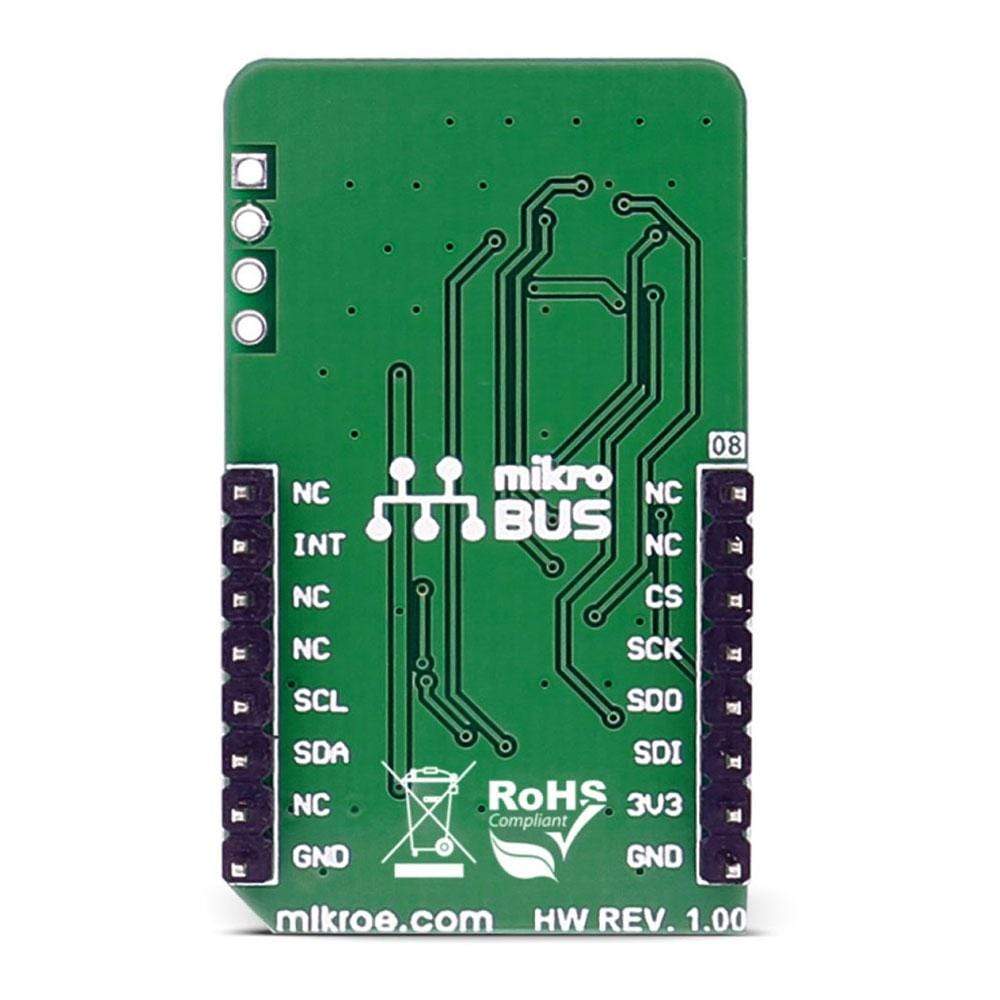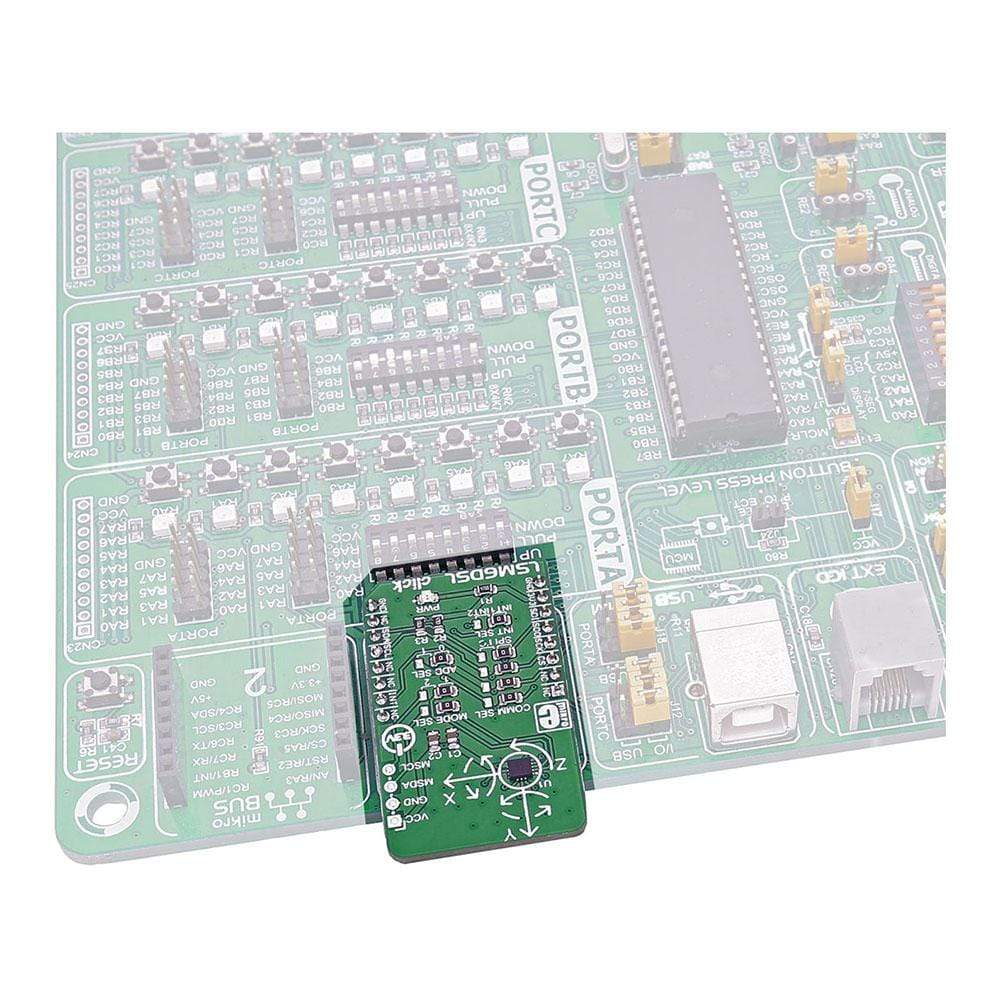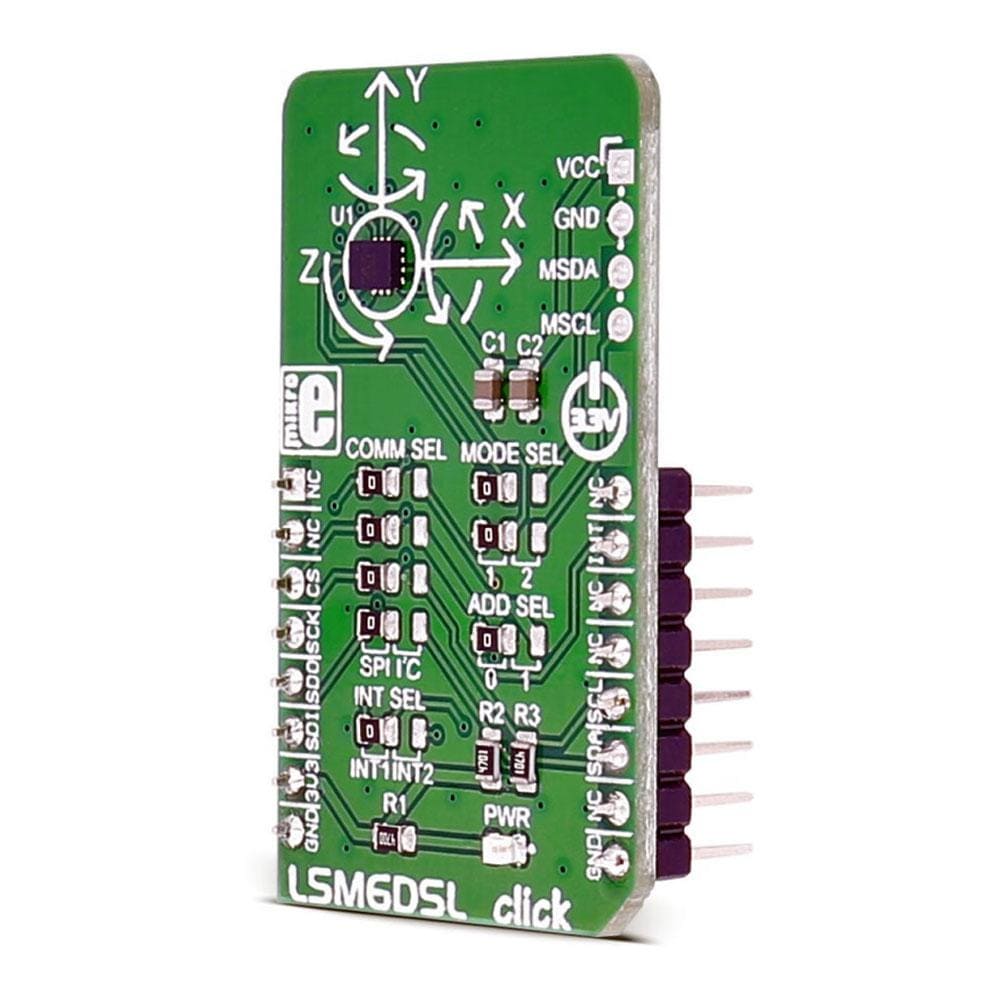
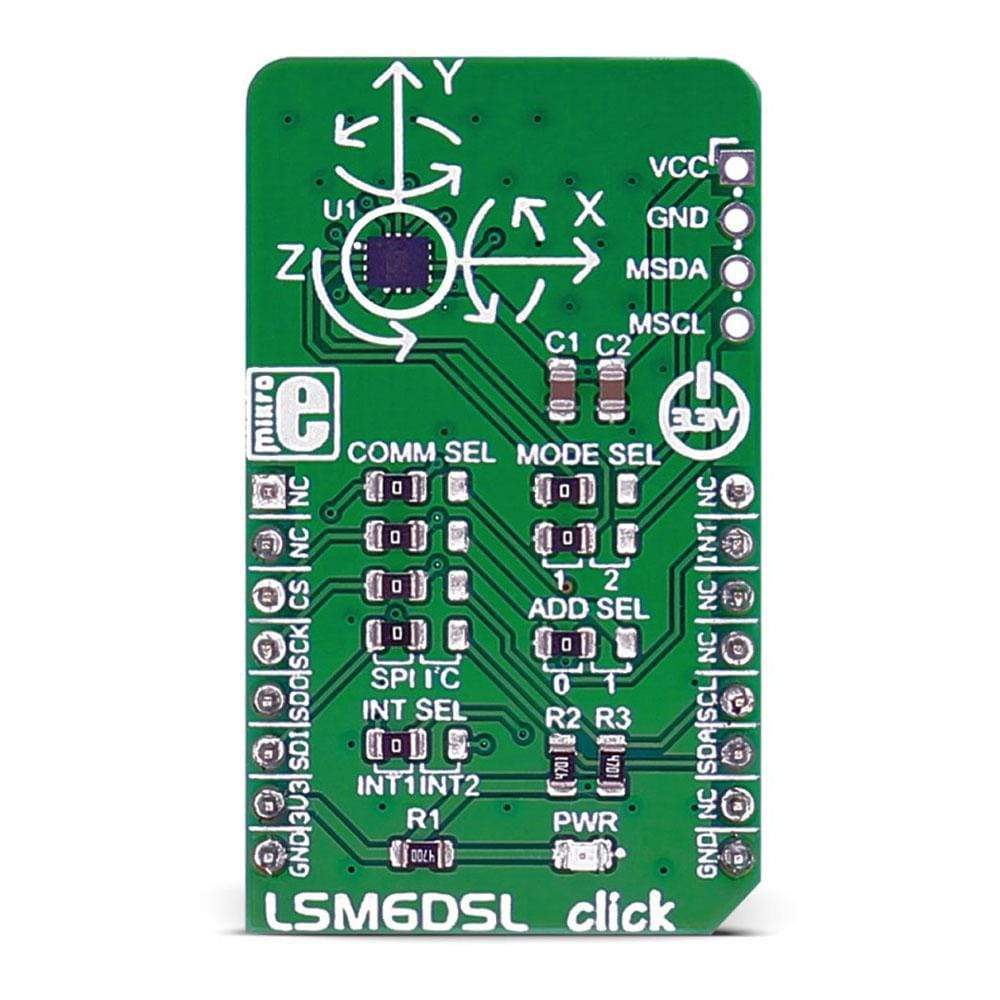
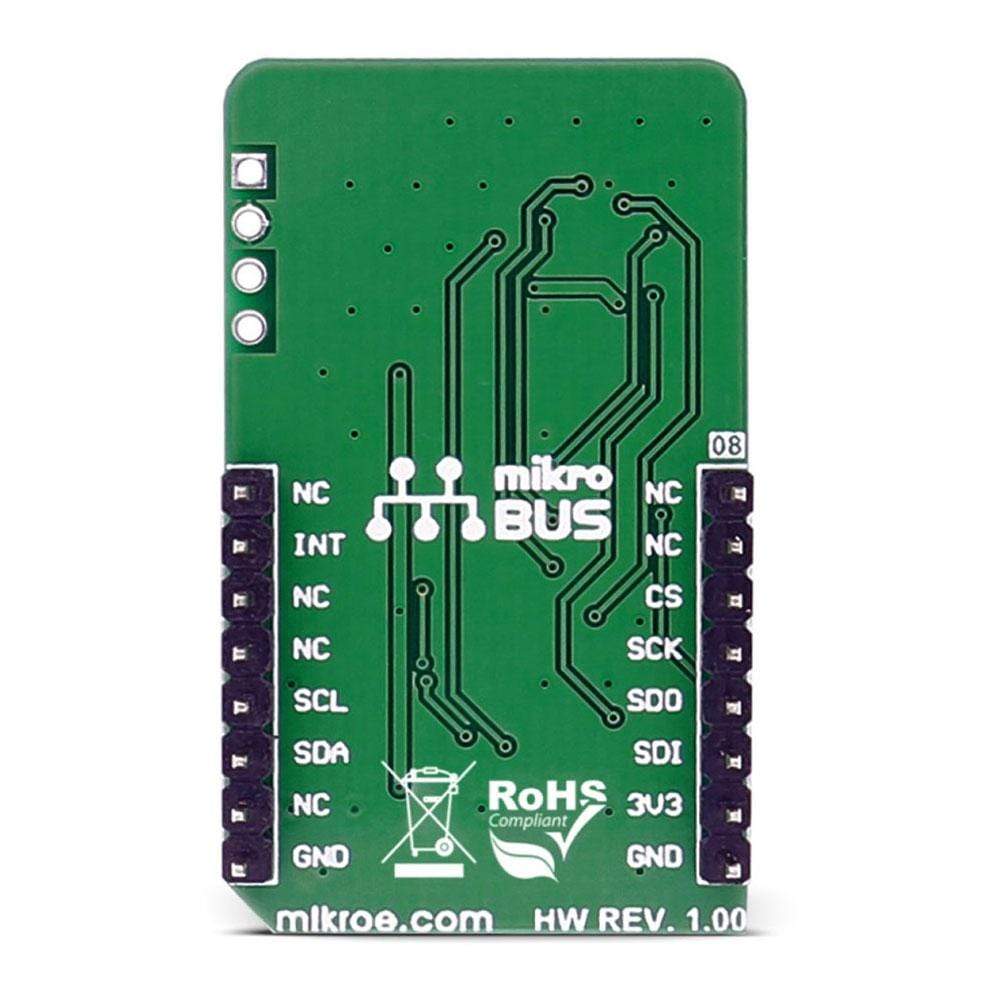
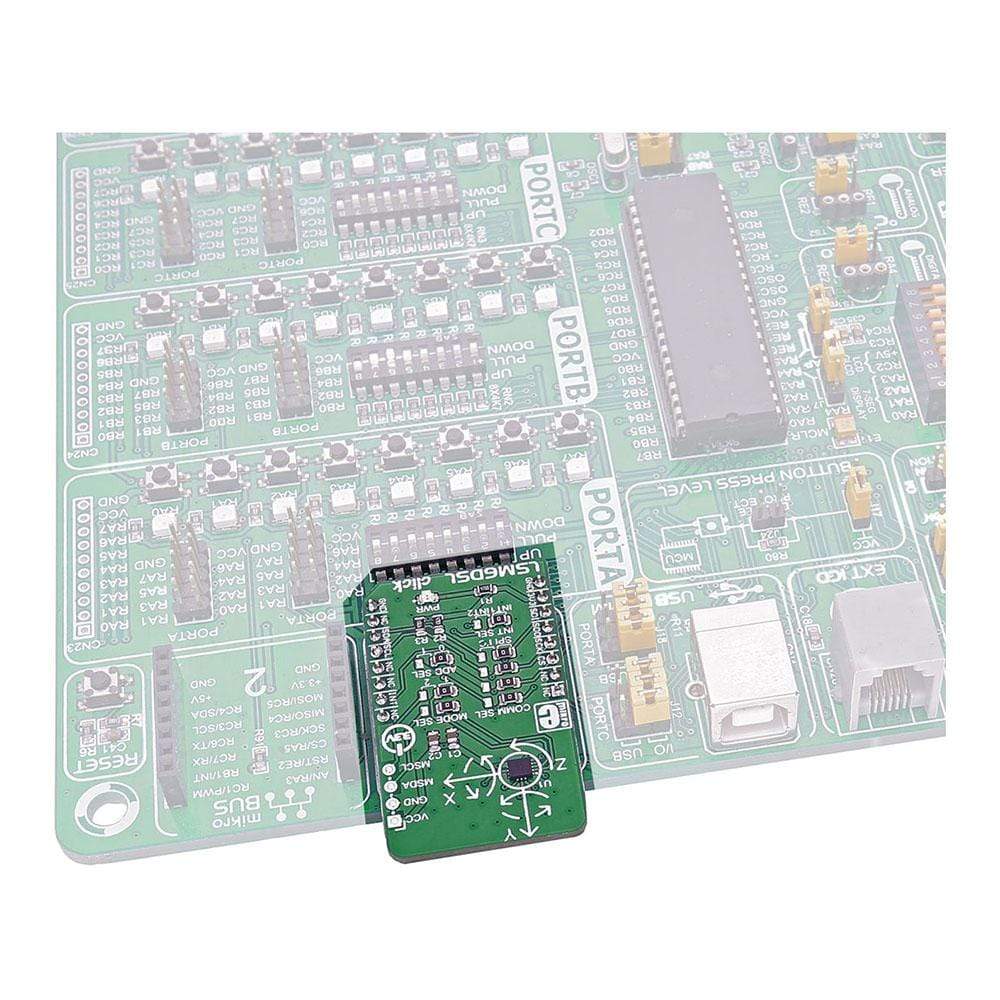
Overview
The LSM6DSL Click Board™ measures linear and angular velocity with six degrees of freedom. It carries the LSM6DSL high-performance 3-axis digital accelerometer and 3-axis digital gyroscope. The Click Board™ is designed to run on a 3.3V power supply.
The LSM6DSL Click Board™ communicates with the target microcontroller over SPI or I2C interface, with additional functionality provided by the INT pin on the MikroBUS line.
Downloads
Das LSM6DSL Click Board™ misst lineare und Winkelgeschwindigkeit mit sechs Freiheitsgraden. Es verfügt über den leistungsstarken digitalen 3-Achsen-Beschleunigungsmesser und das digitale 3-Achsen-Gyroskop LSM6DSL. Das Click Board™ ist für den Betrieb mit einer 3,3-V-Stromversorgung ausgelegt.
Das LSM6DSL Click Board™ kommuniziert mit dem Zielmikrocontroller über die SPI- oder I2C-Schnittstelle, wobei zusätzliche Funktionen durch den INT-Pin auf der MikroBUS-Leitung bereitgestellt werden.
| General Information | |
|---|---|
Part Number (SKU) |
MIKROE-2731
|
Manufacturer |
|
| Physical and Mechanical | |
Weight |
0.018 kg
|
| Other | |
Country of Origin |
|
HS Code Customs Tariff code
|
|
EAN |
8606018711239
|
Warranty |
|
Frequently Asked Questions
Have a Question?
Be the first to ask a question about this.

